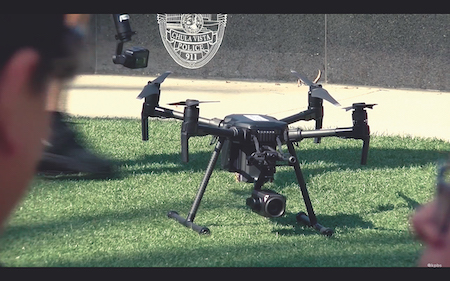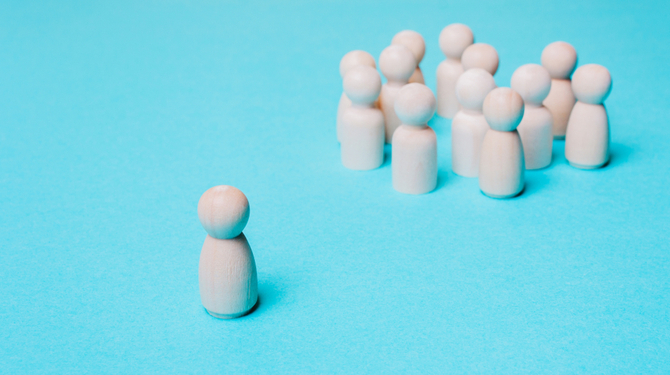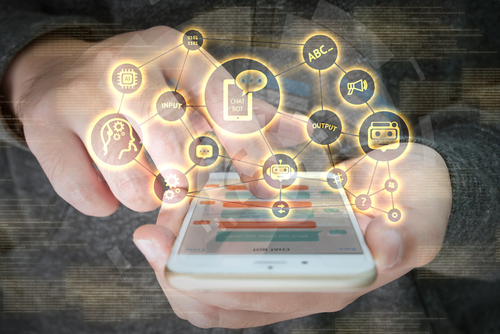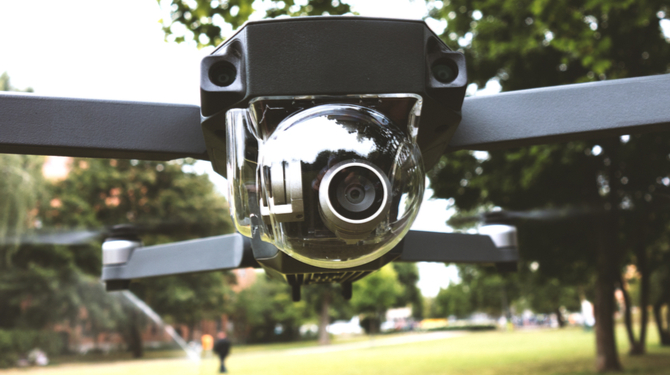The Chula Vista Police Department (CVPD) is at the forefront of defining how drones can be used as first responders with their Drones as a First Responder (DFR) programme, designed to be a counterpoint to the traditional model of integrating drones into law enforcement agencies. CVPD is one of the agencies involved with San Diego’s consortium in the Integration Pilot Program (IPP) that the Federal Aviation Administration (FAA) has rolled out across the USA.
Utilising drone technology
The DFR programme launched in October 2018, as a partnership between CVPD and Cape, a platform for drone telepresence and data management. Chula Vista is on the very southern tip of California, just north of Tijuana, and has an officer to citizen ratio of 0.87 per 100,000, well below the national average. Because of this factor, they have had to learn to be innovative and creative with technology.
Captain Vern Sallee, head of the CVPD drone programme, says, “The roots of CVPD’s DFR programme arose after a series of tragic incidents started national conversations about police use of force around 2015. Specifically there was a high-profile officer-involved shooting within our county, involving an individual in mental crisis. This shooting, which occurred on an otherwise very routine call, spurred large protests and near riotous conditions for several days. In the aftermath, we had a couple of patrol watch commanders discuss how we could improve our responses to routine calls where we have limited initial information.” The conclusions were that officers know how to tactically tackle high-risk calls like robberies, but many use-of-force incidents happen on calls that appear from the outset to be routine. They used the SARA (Scanning, Analysis, Response, and Assessment) model and came up with a solution of using an experienced plains clothes police officer in advance on calls as a scout. This SARA officer was able to offer better planning and preparation and to give more information of better quality than 911 calls. But it was expensive to maintain and challenging to staff this experiment, even though outcomes were improved.
So they turned to drones, which can be used in the same way as the SARA officer model but can get onto the scene faster, provide a better tactical overview, and provide the same critical information to the officers, as well as record the incident. Sallee: “The confluence of the SARA officer concept and the use of drone technology was the inspiration of the DFR concept at CVPD.”
In a simulated case of the technology being used to track a suspect involved in a shooting, they are able to follow the suspect and constantly feed back information to the ground forces, including where the suspect puts their weapon. Chief of Police Roxanna Kennedy says, “The officer who is using the UAV can share to those officers who are rolling to the scene real time information describing if there’s a weapon, what the suspect is wearing, where the suspect is, and that way, when the officers go into the scene they’re able to go in and deal with issue immediately.”
Through hundreds of flight hours and 73 drone-assisted arrests to date, they have proved their theory of the advantages of aerial visibility and intelligence. The birds-eye perspective means the officers on the ground are better informed of what they are walking into, as the presence of a weapon on a suspect can be identified so that the officers can plan the appropriate tactical response. This information gathering also means that the CVPD can avoid deploying more complex and expensive resources, such as helicopters, which would provide the same aerial information. This is critical for agencies in jurisdictions that cannot afford a manned helicopter programme. Another benefit is that a drone can be sent to far more calls than a helicopter could. This is not to say that drones will completely replace helicopters, but can supplement their activities and be a vital asset for aerial management for smaller agencies.
The DFR model differs from traditional drone integration into public services, which is more like SWAT and is reactive rather than proactive. The result is limited coverage and potential, with only the drone pilot gaining better visibility, as they are the only one looking at the footage. This model is not optimised to serve officers responding to routine calls, and is hard to adapt to expansion.
DFR instead is proactive and is integrated into daily response operations, able to be used effectively as a de-escalation tool. The drone teleoperator can send a drone out before deploying ground officers, especially useful if all ground officers are deployed elsewhere. While CVPD waits for officers to become free, the drone is able to continuously track the suspect, even if they have moved away from the original area of the call. It can continue to keep an aerial watch on the suspect while the ground team mobilises, feeding them real-time information about the case, giving them the exact location of the suspect and their appearance, which offer the ground officers a huge tactical advantage.
CVPD has highlighted that they can use drones to clear low priority calls without ever utilising a ground unit, keeping them available for higher priority calls. In this way they can improve the performance and allocation of the limited resources available.
Sallee is quick to note that UAVs are not replacing human officers, but instead enhancing their abilities. “They’re giving experienced officers, who might not be in the field, the chance to provide their expertise without going onto the scene,” says Salle. “They’re assisting all of our officers in how they respond to these emergency calls.”

A drone pilot's view of a simulated shooter incident. In the centre is the suspect's car that the drone has tracked to this remote site to guide the officers on the ground to the scene in safety.
Concerns
CVPD fields questions about community concerns over using drones for public safety, something they expected and have dealt with proactively. Sallee says, “When we started our drone programme in 2015, we first formed a working group to research best use cases, research best policies, and explore community concerns about privacy and civil rights in the space around police use of drones.” They created a public website and email address to field public questions, spoke to community leaders, led public forums, spoke to the media to share the vision, all so they were being as transparent as they could be before ever investing in any equipment.
They continue to educate the community in town hall meetings to ensure they’re comfortable with their work and to showcase how the technology can improve public safety in emergency situations. Currently they are developing an online dashboard to share up-to-date stats on their drone flights, the calls for services cleared only using a drone, as well as arrests where a drone was present or assisted, with a desire to expand this to including all flight data and flight paths on a 24 hour delay so the public can see what the operations look like. They want to inform the public about their use of drones and reassure them they’re not being used for surveillance. Transparency has been highlighted as the key gaining the public’s trust, being open and approachable and sharing all the relevant data to ensure that the public knows how and why drones are being used and how.
Research shows there is a public appetite for law enforcement agencies to use drones. Cape completed a study that revealed that 71% of Americans support use of drones for law enforcement, 84% expect law enforcement agencies to use the best tools and technology for ensuring their safety and 62% would feel safer if drones were used in their communities1.
The feedback from Chula Vista feedback confirms this research, with positive feedback from the town hall forums that are still held, but there is inevitably suspicion remaining from some residents. CVPD sees this as an ongoing educational process.
Future
Now that the concept has been proven to be effective, CVPD is looking forward to the next iteration of the programme, taking on board the lessons already learned.
They discovered value of outsourcing the training for turn-key pilots, and the importance of using public and private partnerships so they can focus their training on the internal policing instead. Leveraging the right software and partnering with drone experts Cape has also been a positive learning experience for them, and they are looking for new technology partners to improve their effectiveness and to ensure flight safety, especially as they aim to gain approval from the FAA to fly Beyond Visual Line of Sight (BVLoS).
Roxanna Kennedy stresses that law enforcement is always under intense scrutiny. Giving officers as much accurate information as possible is key to improving their tactical responses to all situations. Therefore, they are looking to expand the DFR model to provide more layers of data for the officers on the ground, now that the model itself has been validated. Improving telepresence of drones to respond to more calls. Kennedy says, “The ability to see and understand how we respond to calls allows us to make the best decisions possible and allocate resources more effectively. This truly is a de-escalation tool.” This added insight gives great peace of mind to the officers responding to calls.
1. https://www.cape.com/press-release/2018/11/07/new-study-reveals-americans-ready-to-embrace-drones-for-public-safety


.jpg)
.jpg)
.jpg)

.jpg)



.jpg)
